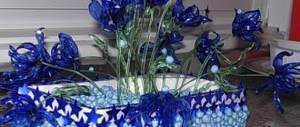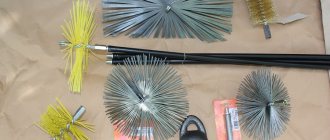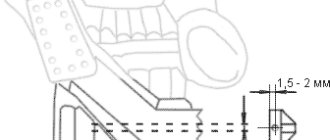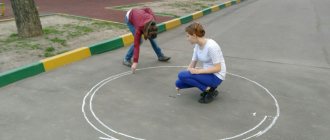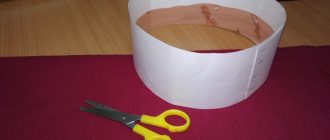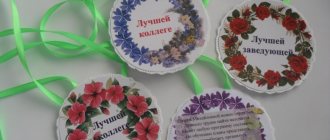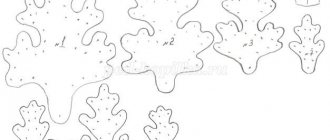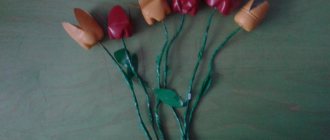Fountain device
Depending on conditions or personal preference, the fountain can be with or without a pump.
Modern decorations of this type are used with equal success both outside the house and indoors.
Fountain pumps
A decorative water source requires a special pump. This equipment is very easy to use and reliable. You need to install it and do a test run. These steps are described in detail in the instructions. Then you can finally connect and start the fountain.
For apartments and houses, as a rule, small fountains are used.
Pumps are sold in different capacities and allow different water pressures. In addition, thanks to them it is possible to create interesting water forms.
It's all about size and device.
Pumps operating from the mains are more often used. They are affordable and durable. In general, any brand of submersible pump will do. You just need to think about installing a filter and transformer.
Without pump
If desired, the fountain can be constructed without a pump. Only in this case will the structure be open. To create it, a pipe is brought to the location of the fountain and a tip is installed on it to regulate the direction and power of the jet.
With this approach, they think about where the water will be discharged, for example, to a river, to a garden plot, for irrigation, or to a well.
DIY mini fountain | DIY master class
The idea of making a small fountain came to me quite a long time ago. Moreover, it is small, since there is not much space on the table, plus it is autonomous. Once I even made a fountain. But the pump was purchased (for an aquarium) weighed about 400 grams and pumped bless you. Accordingly, the fountain turned out to be not as small as we wanted. And then the other day, once again rummaging through my electronics spare parts, I came across a bunch of micromotors from cameras. And the idea came that you could make a pump yourself, and it would be so small that the fountain would be the size of a pack of cigarettes in area.
I decided to make the pump based on the principle of a centrifugal pump. Water enters the reservoir through the inlet, and there it spins with a wheel with blades. Due to centrifugal force, water tends to the edge at which there is an outlet.
1 - hole for liquid supply; 2 - impeller; 3 - body; 4 - pipe for draining liquid; P - centrifugal force
So let's begin. Here is the motor itself, the size is more than acceptable. ?
We make an impeller for this motor that will pump water.
I made it from the first plastic gear I came across.
After processing to the size of the pump body, it began to look like this.
Now we make blades from pieces of plastic and glue them to the impeller. After the glue has dried, we file the ends so that they do not extend beyond the wheel.
Let's start making the body of our pump. For it, I took a plastic deodorant cap.
We saw off the excess from it and drill two holes. The small one at the top is for the motor axis, and the large one is for the water outlet.
Now we attach the motor and the output tube to our body with hot glue. The body of a ballpoint pen was chosen as it.
The motor should be glued very carefully without distortions, so that the impeller does not touch the inside of the housing during operation.
Once the glue has dried, cut out a panel with a hole for water entry from a piece of plastic. I made it from a sunflower oil cap.
We glue it hermetically to the body and our mini pump is ready. Such a pump, with its size, in test tests produced a column of water 20 cm high and 4 mm thick (inner diameter of the handle body) when powered by a 3.7 volt Nokia battery. If the outlet hole is made narrower, the flow will be higher, but I did not need this.
Now let's start making the fountain itself. Here, as they say, whoever has enough imagination for what. In my imagination, it was a slide from which a stream of water falls from above, changing direction as it falls. I decided to make it from foil, stupidly crumpling several balls and gluing them with hot glue. After gluing and pre-painting, the workpiece looked like this.
As a source for the water to flow from, I took a shell of a suitable size and drilled a hole in it for the straw.
After attaching the pump and decorative elements to the slide, this is what I got. The unpainted foil cubes were temporary to adjust the direction of flow while the shells and bottom groove were attached.
I took a small plastic box as a water reservoir.
After covering it with foil balls, it began to look like this.
Now we insert our slide into the tank, glue a battery, a switch, a charging connector and, optionally, a trimming resistor to adjust the flow strength and LEDs for illumination. Then we glue the slide itself to the tank along the edges with hot glue.
We mask the junctions of the slide and the tank with balls of foil and paint them finally, not forgetting to protect the unpainted elements.
After the paint has dried, pour water into the tank, turn on the power and enjoy the work done. 
That's all I wanted to say. Thank you for your attention!
PS: For those who do not understand something:
sdelaysam-svoimirukami.ru
Indoor fountain for an apartment
Fountains are classified as follows:
- Waterfalls. The most popular option. The water flows beautifully from top to bottom.
- Cascade. The water also goes downhill, but passes through several “thresholds”.
- Classic option. A stream of water shooting upward. Not the most suitable design for placement inside the house.
- Designs in the form of a stream or small lake. This model is ideal for a country house.
The most common decorations in houses and apartments are all kinds of fireplaces and fountains.
The stores offer a sufficient range of indoor and outdoor decorative compositions of various designs and shapes. If desired, you can create a fountain with your own hands. In this case, you will definitely guess the design style and dimensions.
By the standards of modern technology, this is an elementary thing that does not pose any difficulties in manufacturing.
Choosing the location of an indoor fountain
We decide on the installation location of the future decorative element of the interior. The size of the fountain should be proportional to the size of the room. A large structure will look at least out of place in a small room, and a tiny fountain will be lost in a spacious room.
Making an indoor fountain will not take much time.
If there are pets or small children in the house, then the fountain should be installed in a place inaccessible to them. And since the design increases humidity, it should not be placed close to furniture made of natural wood.
Depending on the installation site, fountains are divided into floor, wall or tabletop.
A home fountain is a beautiful interior decoration.
Necessary materials
- A water container as the basis of a future fountain;
- Hose 10 – 15 cm long;
- Large thick plastic bag;
- Waterproof adhesive;
- Aquarium pump.
The location of the waterfall on the northwest side of the house will allow the family to live in abundance for many years.
2The hard way
This version of the fountain operates due to the force of gravity and does not require financial investments. Bottles and glue for making it can be found in every home, and the joy of children will be priceless. To build it you will need:
- One 2 liter plastic bottle
- 2 smaller yogurt bottles
- Pen refill for writing
- Cocktail straws
- Rubber tube and connectors from the dropper
- Glue cap
- Nail
In addition, you will need the following equipment:
- Alcohol lamp or gas burner
- Knife
- Scissors with pliers
- Small square of sandpaper
- Hot glue with a glue gun
- Marker
How to create a fountain:
- Bottle caps are degreased and sanded before gluing them with hot glue. Heat a nail red-hot over a fire and carefully melt a couple of small holes in both plugs. Connectors are put in there.
- The bottom of the yogurt container is degreased and a stopper from a two-liter bottle is glued onto it. Again, heat the nail on fire and melt a couple of holes in it.
- Take a rubber tube about 40 cm long. One of its ends is inserted into a hole in the cork. Part of the rod is inserted into the other to make the structure rigid. After this, all cracks are sealed with hot glue.
- The second tip of the tube is connected to the connector on the glued plugs. A cocktail pipe is inserted into it. Then it is shortened so that it touches the bottom of the container.
- Cut off the top of a large bottle and connect it to the cork, which is already glued. Now it's the nozzle's turn. It is made from a piece of rubberized tube and a glue cap or a pen refill. The finished nozzle is connected to the tube from the dropper, which is already in the device, using a connector.
- To make this happen, one part of the rubberized tube must be stretched by inserting the end of the river into it. The nozzle needs to be thin and rise high. Without it, the water will begin to flow down like a waterfall.
- Another tube is attached to the connector on the second side of the glued plugs, and it is also cut so that it touches the bottom of the container. Then all the parts of the fountain are combined into one device.
- If you need to increase the stability of the structure, cut out the bottom of a plastic bottle and glue it with the grooved part to the bottom of the fountain. At this point, its construction is considered completed.
Actuation
Launching this fountain will require a little effort, but the result will exceed all expectations.
- Water is poured into the lowest container, having first unscrewed it.
- Connect the bottle back and turn the fountain over. When the liquid rushes down, it is allowed to drain completely. If the process takes longer, you can press on the bottle.
- Install the fountain with the bowl at the top. To start the action, you will need to pour about 50 ml of liquid into the bowl at the top. It will rush down, displace water from the bottle below and the fountain will start working.
- When the fountain stops working, you just need to turn it. You no longer need to recharge it.
The main distinctive feature of this fountain is that its jet hits so high that it exceeds the level of the source. And this without any engine or other complex mechanism. The practical use of this fountain for adults is that it can be used as a humidifier for plants in the room.
How to make a fountain: diagrams of fountains of different configurations
Small fountain
First, we select the container in which the composition will be located and check its integrity. Then we take the pump and attach a regular hose to it. We attach the structure to the bottom of the container and fix it. After this, we cover the surface with stones, driftwood or other decorative composition. This must be done so that the pump and tube are not visible.
A home waterfall will please the eye, and the murmur will soothe and relax.
Often, a figurine, for example, a frog, is placed directly on the tube from which the water flows. The design can be combined in such a way that water pours out of the frog’s mouth. To do this, you need to select a decorative element of the correct shape and in the desired position, and then drill a hole in it and place the hose inside.
To make the structure as airtight as possible, special waterproof substances are used to glue parts. And the power of water flow is controlled using a pump.
It is worth considering attractive additions that can decorate any structure.
Desktop
This mini fountain can decorate a table, bedside table and even a windowsill. It requires very little space.
This model is very similar in design to the previous one, only it uses a low power pump. A large bowl is used as a base, a pump, a hose, and then decorative elements are placed in it.
Such compositions are practically silent.
A pump with a hose is installed in the bowl, the hose is passed through a bamboo tube. “Live” bamboo is placed on the opposite side. The structure is fixed in the bowl using pebbles. Fill with water.
This decorative home fountain is made using natural stones and natural bamboo.
The result is such a home composition with a fountain. Bamboo tubes from which water flows are adjacent to living bamboo branches. A very effective option.
A bamboo fountain is a real decoration for the interior.
1Easy way
A simple fountain that you can build with your own hands is called the Giron fountain. To provide a child with a whole ocean of positive emotions when launching a new toy, you need very little time and effort. To build a fountain you need:
- Plasticine. Can be replaced with hot glue
- Straws for cocktails
- 2 bottles of 2 liters or so
- Dyes
- Container for liquid with water
- The space where the fountain will stand - a basin, bathtub or tray
- Funnel
- Knife
Creation method: Everything will take about 5 minutes. In this case, the tubes will be rotating, and to decorate the fountain they can be turned up and down.
- Bottles are washed. If there are stickers on them, peel them off. Using a utility knife, carefully cut holes in the bottles at the same level. You need as many holes as you plan to insert tubes.
- Tubes are inserted. After this, both bottles are connected using tubes. Holes from which water may leak are covered with something sticky or sealed with hot glue. You need to be careful as it can deform plastic bottles.
- Exactly as much water as needed for the experiment is poured into two different containers. Dye is diluted in it. This is necessary so that the child, using the example of mixing two liquids of different colors, can see how water moves in the fountain.
- Water is poured into the bottles through a funnel. Water flows from one bottle to another, the two colors mix to form a new shade. The tubes serve as a functional decoration, discharging excess liquid displaced by the volume of water flowing from another container.
DIY mini fountain from scratch
The idea of making a small fountain came to me quite a long time ago. Moreover, it is small, since there is not much space on the table, plus it is autonomous.
Once I even made a fountain. But the pump was purchased (for an aquarium) weighed about 400 grams and pumped bless you. Accordingly, the fountain turned out to be not as small as we wanted. And then the other day, once again rummaging through my electronics spare parts, I came across a bunch of micromotors from cameras.
And the idea came to me that I could make a pump myself, and it would be so small that the fountain would be the size of a pack of cigarettes in area. I decided to make the pump according to the principle of a centrifugal pump. Water enters the reservoir through the inlet, and there it spins with a wheel with blades. Due to centrifugal force, water tends to the edge at which there is an outlet.
1 - hole for liquid supply; 2 - impeller; 3 - body; 4 - pipe for draining liquid; P is centrifugal force.
So let's begin. Here is the motor itself, the size is more than acceptable.
We make an impeller for this motor that will pump water. I made it from the first plastic gear I came across.
After processing to the size of the pump body, it began to look like this.
Now we make blades from pieces of plastic and glue them to the impeller. After the glue has dried, we file the ends so that they do not extend beyond the wheel.
Let's start making the body of our pump. For it, I took a plastic deodorant cap.
We saw off the excess from it and drill two holes. The small one at the top is for the motor axis, and the large one is for the water outlet.
Now we attach the motor and the output tube to our body with hot glue. The body of a ballpoint pen was chosen as it.
The motor should be glued very carefully without distortions, so that the impeller does not touch the inside of the housing during operation.
Once the glue has dried, cut out a panel with a hole for water entry from a piece of plastic. I made it from a sunflower oil cap.
We glue it hermetically to the body and our mini pump is ready. Such a pump, with its size, in test tests produced a column of water 20 cm high and 4 mm thick (inner diameter of the handle body) when powered by a 3.7 volt Nokia battery. If the outlet hole is made narrower, the flow will be higher, but I did not need this.
Now let's start making the fountain itself. Here, as they say, whoever has enough imagination for what. In my imagination, it was a slide from which a stream of water falls from above, changing direction as it falls. I decided to make it from foil, crumpling several balls and gluing them with hot glue. After gluing and pre-painting, the workpiece looked like this.
As a source from which the water would flow, I took a shell of a suitable size and drilled a hole in it for the tube.
After attaching the pump and decorative elements to the slide, I got this. The unpainted foil cubes were temporary to adjust the direction of flow while the shells and bottom groove were attached.
The pump is located directly under the slide, through which the handle body passes and connects to the top shell.
I took a small plastic box as a water reservoir.
After covering it with foil balls, it began to look like this.
Now we insert our slide into the tank, glue a battery, a switch, a charging connector and an optional trimming resistor (I specifically took SP5-3 at 100 Ohms) to adjust the flow strength and LEDs for illumination. Then we glue the slide itself to the tank along the edges with hot glue.
Parts connection diagram.
We mask the junctions of the slide and the tank with balls of foil and paint them finally, not forgetting to protect the unpainted elements. After the paint has dried, pour water into the tank, turn on the power and enjoy the work done.
And finally, a short video showing how the fountain works.
I am the author of this craft, so if you have any questions about the assembly, please ask.
sdelay.tv
City fountain | Country of Masters
Good day everyone! Before you is my debut in MK, don’t judge strictly))) In kindergarten they gave me the task of making a craft for City Day. I thought and thought, and decided to make a model of a fountain from a city park.
I didn’t find a similar mk on SM, if I’m wrong, be sure to give me the link))) I cut out the base of the fountain from polystyrene foam, glued all the parts together with my favorite “Dragon”. The fountain can be of any shape, this is exactly what we have.
View from above…
I coated everything with plaster, waited until it dried, and sanded it
Then I got carried away and forgot that I was not only a sculptor, but also a photographer))) I cut out a circle from thick cardboard and glued a fountain in the middle. I painted the empty space with black gouache - like earth)))
I made paths from plaster (I drew imitation tiles with a toothpick). I painted the outside of the fountain yellow, the inside with blue gouache (it turned out too yellow, but oh well, it looks brighter))), the paths - beige, and the empty space - black gouache - like the earth)))
and began to pour in “water” - again “Dragon” glue. water pours from the hole in the ball at the top
I trimmed the “ground” with pink, yellow, blue and green crepe paper. turned out to be flower beds)))
And this is the original. They seem to be similar... flowers bloom differently at different times of the year, not just marigolds)))
The proportions are a little off, but I’m a beginner sculptor...
stranamasterov.ru
Which pump to choose
A wide range of pumps allows you to choose the best option for operation in specific conditions. First of all, you should decide on the type of pump - submersible or surface. The advantages of submersible pumps include:
- invisibility from prying eyes;
- ease of installation - installation involves lowering the pump to the bottom of the reservoir and connecting the pipes and power supply;
- low noise level;
- efficiency;
- optimal for small fountains.
Surface pumps also have their advantages:
- water supply to any part of the fountain;
- free access to equipment;
- there is no need to clean for the winter;
- optimal for complex hydraulic structures on a large surface of a reservoir.
Having decided on the type of pump, pay attention to the maximum pressure and performance of the unit, reflected in the comparison table.
Table: equipment parameters for different types of fountains
| Fountain type | Pressure (hose length), m | Pump capacity, cubic m/h |
| Geyserny | 0,2 | 2 |
| 0,3 | 3 | |
| 0,5 | 4 | |
| 0,7 | 5 | |
| 0,8 | 7 | |
| Cascade | 0,6 | 1 |
| 1,0 | 2 | |
| 1,5 | 3 | |
| 2,0 | 5 | |
| 2,5 | 6 | |
| 3,0 | 8 | |
| Bell | 0,3 | 0,9 |
| 0,4 | 1,2 | |
| 0,5 | 3 | |
| 0,6 | 3 | |
| 0,8 | 4 | |
| 0,9 | 6 |
Basic elements of an indoor fountain
A closed fountain has 3 main elements, which will be discussed in this chapter.
Fountain pump
The heart of such a fountain is an electric pump that pumps water through the system. The operating mode of the entire structure will depend on its parameters.
A fountain for a pond in a country house is cascading - powerful pumping equipment is required to organize a waterfall
- For fountains, they sell special pumping stations, consisting of the pump itself and filtration equipment. The filter protects the pump from damage by small particles of stones, sand, and organic matter, and at the same time is responsible for purifying the water in the tank. It needs to be cleaned or replaced at some intervals.
- The structure of pumping equipment varies. There are submersible models, and there are ground-based ones, which are mounted in special boxes and disguised as the surrounding landscape. The last option is easier to maintain.
All equipment is housed in one building
- The pumping station can be in the form of separately spaced units, or everything can be installed in one compact housing. The configuration is selected according to the shape of the reservoir and its size.
- The equipment also comes with a water supply system and a set of nozzles that allow you to change the shape and height of the jet.
Set of pumping equipment with replaceable nozzles
- The pumps can be powered from a 220V public network or from solar panels - the second option is more economical, but it cannot be called stable. You can, of course, provide a battery in case of cloudy weather, but its capacity may not be enough to maintain normal operation, and the cost of the solution increases.
Operating principle of a submersible pump
When choosing a pump, consider the following parameters:
- The power of the equipment will tell us how much water it will pump per hour. This is important for pumps operating in waterfall mode.
- Continuous operation time - if the pump periodically needs to be turned off for rest, then it is unlikely to be suitable for a normal fountain.
- Availability of an overheating protection system. Since the pump is cooled by water passing through it, a clogged filter can cause serious overheating (does not apply to all types of equipment). It would be good if there is a temperature sensor inside, which will protect the station from damage.
- Also look at power consumption. No one will be happy if tens of kilowatts of energy are generated per day.
The pump costs from 2000 rubles. Good units will have a much higher price.
Fountain bowl
The second important element of a fountain is a reservoir into which water flows and from where it is collected. It is a sealed container made of waterproof materials. Here are some examples.
| Capacity, photo | Description: |
Pit covered with waterproof film

